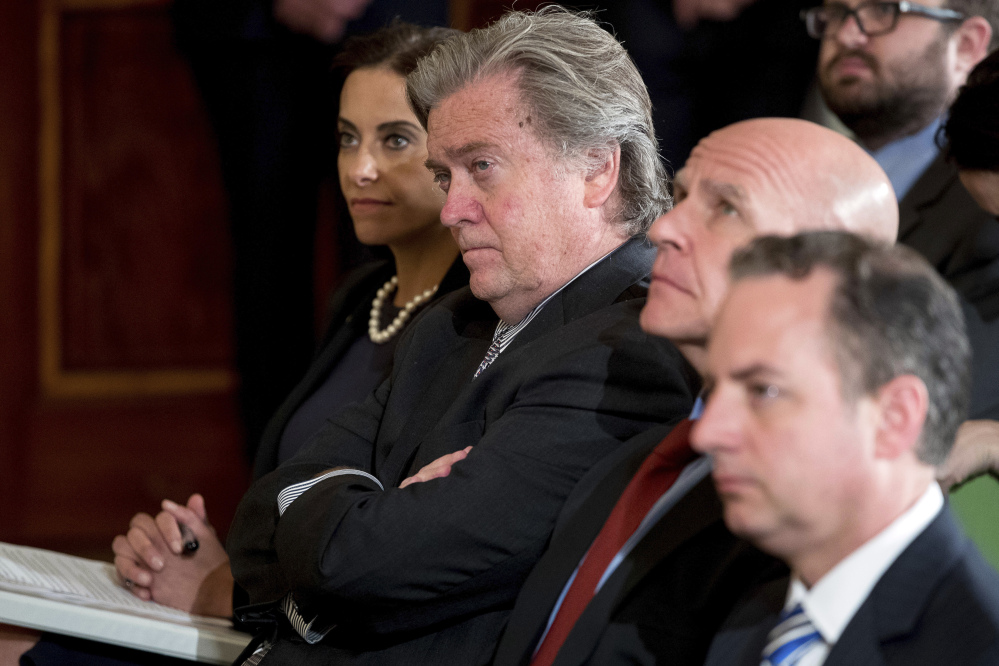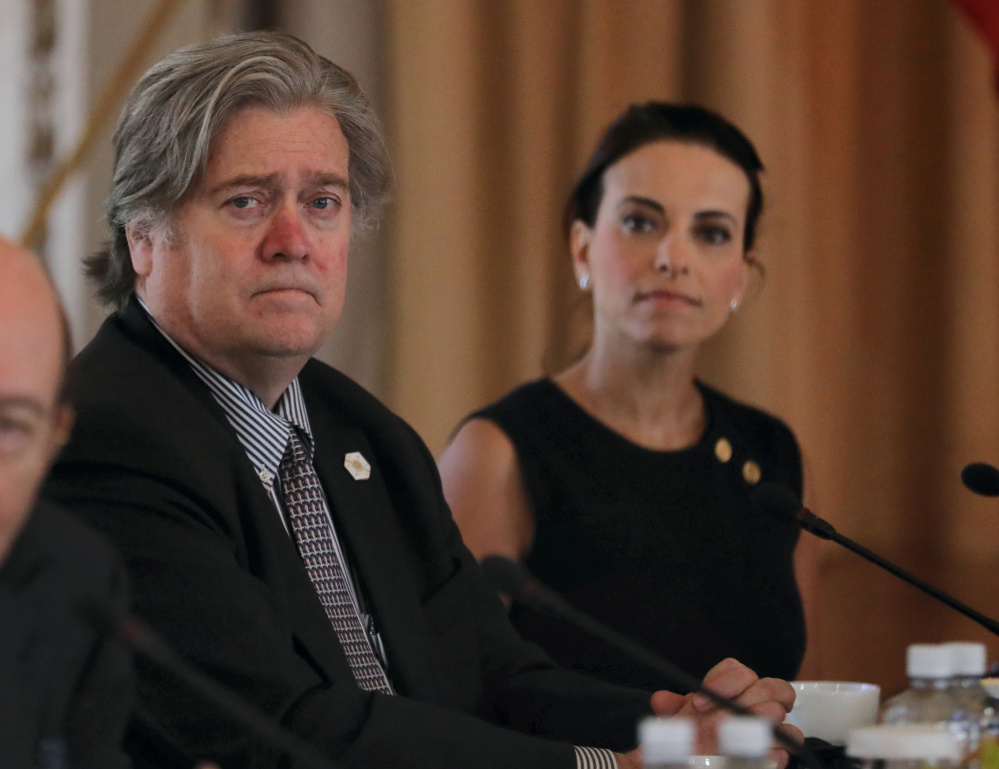WASHINGTON — President Trump has declared: “I am my own strategist.” That would seem to bode poorly for his actual strategist, Steve Bannon.
And Trump now appears to be publicly distancing himself.
In an interview with The New York Post, the president said “I like Steve” and called his adviser “a good guy” – but one who wasn’t really all that involved with his winning election campaign. He said his warring senior officials, including Bannon, must “straighten it out or I will.” In a second interview, with The Wall Street Journal, he dismissively called Bannon “a guy who works for me.”
The unusual public, lukewarm support from the boss has Bannon’s friends worried he will soon be out of a job. But shedding Bannon would be no simple staff shake-up. More than any other member of Trump’s orbit, the former media executive and radio host, known as a bare-knuckle political fighter, has a following all his own. He is viewed by many in the conservative core as the ideological backbone in a White House run by a president who boasts of his flexibility.
“I think it’s important to recognize the value of the base. It’s important to recognize the base sees their advocate in Steve Bannon,” said Michael Caputo, a former Trump campaign adviser who has known the president for decades.
Bannon is not the only Trump official to find himself in the hot seat in a White House divided. Press Secretary Sean Spicer has also come under fire for comments he made about the Holocaust on Tuesday. Spicer has apologized repeatedly, including on Wednesday, and the White House hopes that controversy will pass.
As for Bannon, before joining the campaign last summer as its chief executive officer, he was informally advising Trump. And as leader of the conservative Breitbart News he spent the better part of a year connecting Trump with the populist, nationalist voters who would propel him to victory over 16 Republican opponents and Democrat Hillary Clinton.
In more than half a dozen interviews during the campaign with Bannon on Breitbart’s radio show, Trump laid out his vision for leading the country, with Bannon sometimes playing the role of coach.
Bannon, more than any other White House aide, speaks the language of Trump’s populist base. He spoke in February of “our sovereignty” as a country and about the new administration’s aim for “deconstruction of the administrative state.” He also helped write many of Trump’s hardest-line speeches.
“It would be a terrible signal if Trump were to either force Bannon out or let him go because he is the face of the national populism that inspired a lot of voter to vote for Trump,” said Ned Ryun, founder of the conservative group American Majority and a longtime friend of Bannon’s.
“And what makes it even worse right now,” Ryun added, “is that people have deep concerns about liberal New York Democrats associated with Goldman Sachs coming in and making strong moves at the White House.”
That view cuts to the core of why Bannon might be on the outs at the White House.
He’s feuded with Trump’s son-in-law-turned-senior-adviser, Jared Kushner, and with economic chief Gary Cohn. Both are New Yorkers who have voted for Democrats. Cohn, the former No. 2 at Goldman Sachs, and fellow Goldman executive Dina Powell, one of Trump’s top national security advisers, have been gaining favor with the president.
Last week, Trump removed Bannon from the National Security Council, while Powell appears to be ascendant.
The president’s irritation with Bannon could have roots in his high profile in the early days of the administration. Democrats waged a campaign to brand him as “President Bannon.”
Send questions/comments to the editors.




Success. Please wait for the page to reload. If the page does not reload within 5 seconds, please refresh the page.
Enter your email and password to access comments.
Hi, to comment on stories you must . This profile is in addition to your subscription and website login.
Already have a commenting profile? .
Invalid username/password.
Please check your email to confirm and complete your registration.
Only subscribers are eligible to post comments. Please subscribe or login first for digital access. Here’s why.
Use the form below to reset your password. When you've submitted your account email, we will send an email with a reset code.